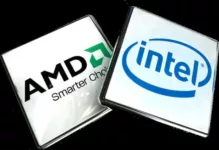Over the next few years we are going to see something we don’t see that often. Two companies in the same market on two very different paths. AMD will be focused like a laser on traditional PC and Server markets but adapting to the new loads and tasks that both are being tossed in. Intel, in contrast, will be expanding massively to drones, IoT, and Automotive each of which has massive, but as yet, unrealized potential for firms in their class.
Now typically when AMD and Intel run at each other AMD is massively disadvantaged but with Intel’s shift in focus they won’t be chasing Intel but a small part of the company and the part that won’t have the greatest interest. The end result is that AMD has the best shot they have had since the early part of last decade to take large chunks of share, but Intel has a shot of getting on the ground floor of sever markets which could end up being larger than PCs have ever been.
So who will win?
Mobile
Looking back at the race toward mobile; both AMD and Intel became distracted by Qualcomm’s early success and tried to pivot. AMD really lacked the resources and, by the time they were forced to try to pivot, they had already sold off their mobile resources to Qualcomm so this caused them to lose focus and change CEOs several times. Intel spent billions in a largely unsuccessful effort to challenge Qualcomm and, by the time they had a viable solution, the mobile market had dropped into decline and Qualcomm was struggling against even lower priced alternatives. Intel didn’t need to compete with Qualcomm but the firms, mostly out of Asia, that were giving Qualcomm grief.
In hind sight neither company was successful and both companies should have far more quickly realized they were on the wrong path. The take away for AMD was that they simply didn’t, and don’t, have the resources to pivot to brand new markets and, for Intel, it isn’t how much you spend it is whether you spend enough and whether the goal is worthwhile. In the latter case going from a high margin part to a low margin part would have made even success likely look like a disaster. They needed to change the mobile market to one where relatively high margin parts could prevail. That would have meant rather than supporting Apple, they have to displace them and they never seriously considered that outcome.
Reminds me a bit of Japan in the WWII, the only way to win was to eliminate the US Manufacturing base and they couldn’t get there. Like Japan in that war, in this last battle both firms should have realized they didn’t have a path to success. Actually, AMD’s CEO at the start of this, did realize that and he was booted by his board as a result.
It does amaze me that when a CEO is booted and a board later realizes they were wrong, they never seem to bring the wronged CEO back. One of the reasons being a CEO often really sucks.
Why Is This Different?
From AMD’s side they aren’t making this same mistake and instead of making a massive pivot into a new market which they don’t have the resources for they are bringing out Zen. product redesigned for the market of today but as it relates to PCs and servers. Instead of pivoting alone they are working to pivot their market to the new loads and given Mobile is weakening this is a far more viable path than chasing Qualcomm.
Switching to Intel; unlike Mobile which was saturated with ARM solutions; cars, IoT, and drones are still anyone’s game. These are all young markets that are dominated by the people that make the products not the firms that make the parts. Automotive is the hardest because it is very established and car makers have “not invented here” badly. Still NVIDIA has made massive inroads but they also have a massive lead as a result but this is actually, at least for now, a high margin opportunity. However, while it seems unlikely that smaller vendors will hurt either NVIDIA or Intel like they did Qualcomm, it is more likely the OEMs will go down their own paths creating an offsetting exposure. This is an area where it is likely NVIDIA Intel should be collaborating and not competing.
This does seem to be happening with IoT Qualcomm and Intel though their collaboration isn’t getting much ink. Drones are still largely greenfield though and with big players like Amazon and Facebook planning to deploy tens of thousands of the things this has the potential to be a market similar to servers and I still think that once drones are sorted flying cars won’t be far behind. (I’m kind of wondering when someone is going to figure this last off and just skip to flying cars).
Wrapping Up: Who Will Win?
Unlike most of the times between AMD and Intel, given both are on very different paths, the outcomes aren’t necessarily mutually exclusive. So if Intel wins in IoT, cars, and/or drones since AMD isn’t there, they really don’t care. Granted if AMD wins a lot in PCs and servers it will hurt Intel if they haven’t pivoted yet but that will be timing and given AMD is currently nearly out of servers they could grow a lot before Intel felt much pain. There is at least a path where both could be successful.
In the end both strategies showcase some learning from the past disaster and, as a result, both have a far greater chance of success. However, AMD’s path is both more in line with their current skills and has less to do with emerging markets so their risk is lower. Intel’s is far more complex and there are ton more variables like FAA and DMV regulation to contend with so their risk is far higher. Then again Intel can take more risk than AMD can balancing this out somewhat. In the end the only thing we can be sure of is that the next few years will be very interesting for both firms.
In the end, I think the firm most likely to win will be the one that most accurately assesses both what needs doing and resources doing it.








